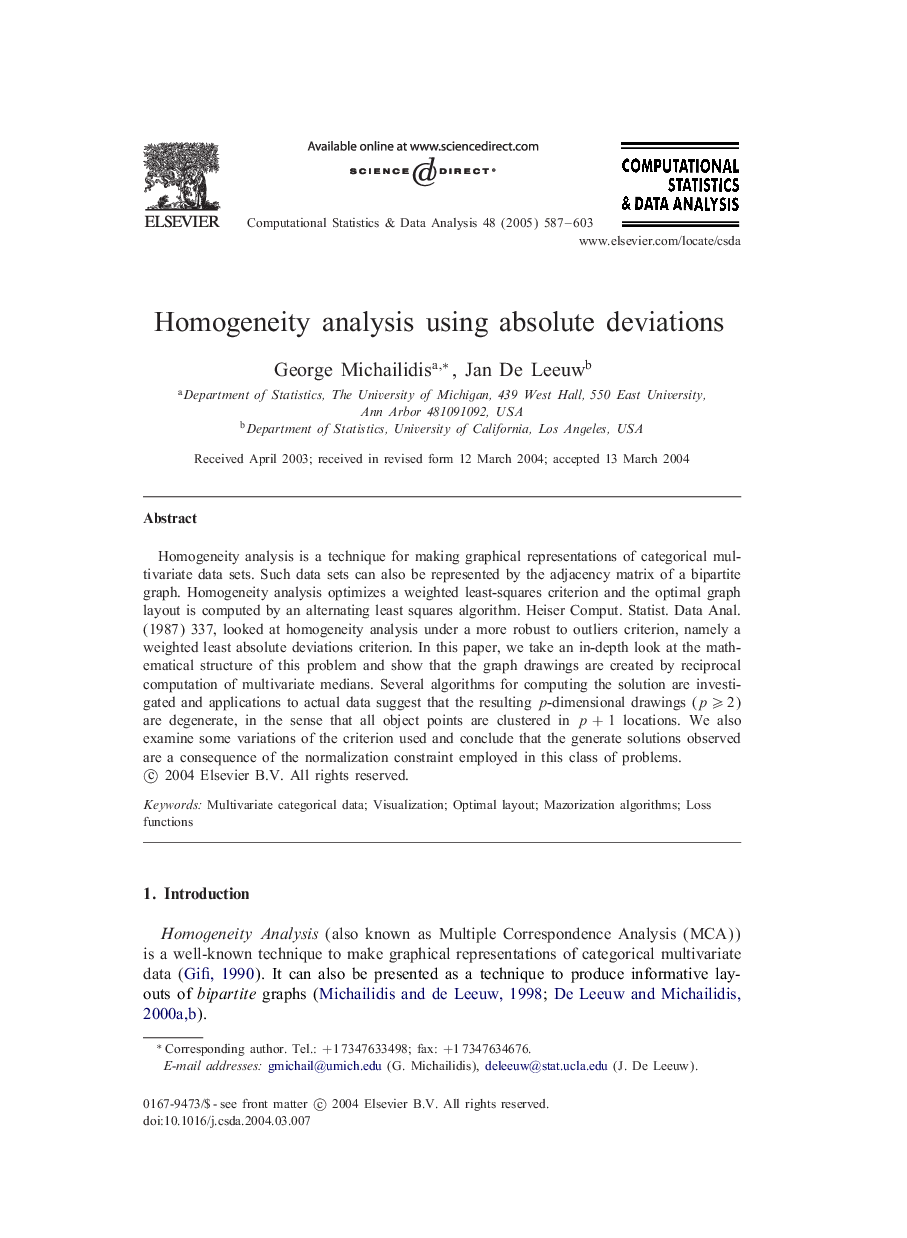| Article ID | Journal | Published Year | Pages | File Type |
|---|---|---|---|---|
| 10327855 | Computational Statistics & Data Analysis | 2005 | 17 Pages |
Abstract
Homogeneity analysis is a technique for making graphical representations of categorical multivariate data sets. Such data sets can also be represented by the adjacency matrix of a bipartite graph. Homogeneity analysis optimizes a weighted least-squares criterion and the optimal graph layout is computed by an alternating least squares algorithm. Heiser Comput. Statist. Data Anal. (1987) 337, looked at homogeneity analysis under a more robust to outliers criterion, namely a weighted least absolute deviations criterion. In this paper, we take an in-depth look at the mathematical structure of this problem and show that the graph drawings are created by reciprocal computation of multivariate medians. Several algorithms for computing the solution are investigated and applications to actual data suggest that the resulting p-dimensional drawings (p⩾2) are degenerate, in the sense that all object points are clustered in p+1 locations. We also examine some variations of the criterion used and conclude that the generate solutions observed are a consequence of the normalization constraint employed in this class of problems.
Related Topics
Physical Sciences and Engineering
Computer Science
Computational Theory and Mathematics
Authors
George Michailidis, Jan De Leeuw,
